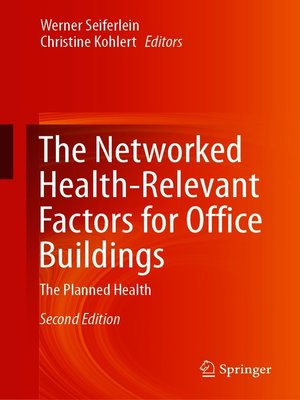The Networked Health-Relevant Factors for Office Buildings
ebook ∣ The Planned Health
By Werner Seiferlein

Sign up to save your library
With an OverDrive account, you can save your favorite libraries for at-a-glance information about availability. Find out more about OverDrive accounts.
Find this title in Libby, the library reading app by OverDrive.



Search for a digital library with this title
Title found at these libraries:
| Library Name | Distance |
|---|---|
| Loading... |
People who work in an office spend at least a third of their lifetime in these spaces. The planning of office and administration buildings can therefore contribute a great deal to the satisfaction and well-being of future users. The book looks at the health-relevant factors that affect people in office and administration buildings and therefore deserve special attention in the planning process. In doing so, the authors are guided by a concept of health as defined by the World Health Organization: Accordingly, health encompasses mental as well as social and physical well-being and thus goes far beyond the factors laid down in legal norms and guidelines.
In this volume, architects and designers, physicians and ergonomists deal with all aspects of interior design seen from a health perspective: What role does colour design play, what significance do light, air and noise have? What does a demand-oriented building technology look like and how is the office furniture adequately designed? Which medical and hygienic aspects have to be considered? How can offices be designed in terms of work-life balance and how will the office change in the course of digitalisation?
The book serves as a guideline that can be applied chapter by chapter in the planning of health-promoting office spaces - depending on the interests of the reader. Problems that arise are discussed using examples, and checklists help you with planning and implementation.
The guide is aimed at building owners, architects, engineers, but also at lawyers, psychologists and doctors as well as university members in the field of economics and engineering.







